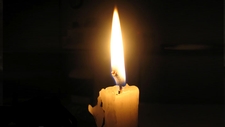Changes Caused by Heating

TEKS Objective
The student will predict and identify changes in materials caused by heating and cooling such as ice melting, water freezing, and water evaporating.
Essential Understanding
The student knows that objects have properties and patterns.
Science Background
Heat and Temperature: Annenberg Learner (website) - Heat is the transfer of energy between two objects with different temperatures. Build your understanding of heat and temperature through easy-to-follow text and video (58 minutes).
Signature Lesson
Water and Ice: Science NetLinks (website) - Water changes from a solid to liquid and back again, in this inquiry lesson.
Water and Ice
Science NetLinks, www.sciencenetlinks.com
Disappearing Water: Science NetLinks (website) - Observe, compare and contrast the amount of water in an open container with the amount of water in a closed container over time.
Disappearing Water
Science NetLinks, www.sciencenetlinks.com
- Supporting Lessons
- Extensions
- Assessment Ideas
- Literature Connections
- Related
TEKS - Additional Resources
Supporting Lessons
Melting and Freezing: Science NetLinks (website) - Investigate what happens to the amount of different substances as they change from a solid to a liquid or a liquid to solid.
Melting and Freezing
Science NetLinks, www.sciencenetlinks.com
Elaboration Lessons and Extensions
Change It: FOSS (website) - How can you change a liquid into a solid, or a solid into a liquid? Students place different objects in the oven and freezer to see what happens.
Assessment Ideas
The following investigation can help you assess your students’ understanding of how heat can change the physical properties of some materials.
Remove one frozen popsicle (flavored ice) from the freezer. Have students observe this popsicle in its plastic tube and compare it with a second popsicle, which has been left at room temperature and is in liquid form. Student pairs should discuss the similarities and differences between the two popsicles. Then, have students take both popsicles outside, into the sunshine, and predict what will happen to them. Students should observe and discuss what happens to the popsicles after 5 minutes, and again after 10 minutes. Ask the following questions.
- What happened to the frozen popsicle in the hot sunshine?
- What happened to the room temperature (liquid) popsicle in the hot sunshine?
- Why did the changes occur?
Literature Connections
Heating. Whitehouse, Patricia. (ISBN-13: 978-1403451033)
Additional Resources
Changing State Ice and Water: Crickweb (website) - Interactive game for primary school students in which materials can be changed from one state to another by heating or cooling.
TEKS Navigation
Grade 1
User Information
Not Registered Yet?
Sign Up Today!
Need Assistance?
If you need help or have a question please use the links below to help resolve your problem.

Comments